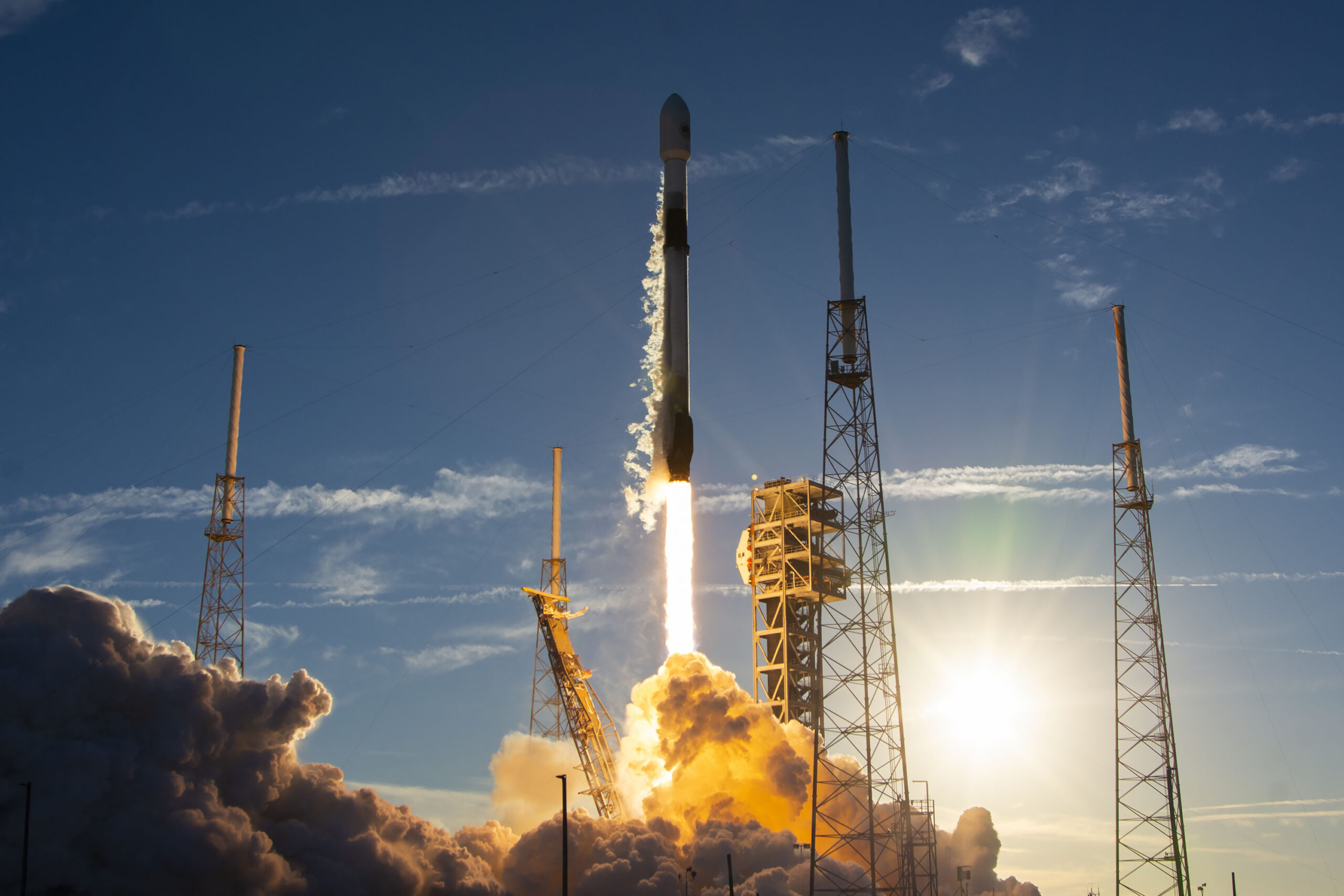MDA, SDA Satellites On Orbit After Launch

SpaceX launches satellites for the SDA and MDA in a Feb. 14 mission. Photo: SpaceX
The Department of Defense confirmed late Wednesday that six demonstration satellites launched earlier that evening for the Missile Defense Agency (MDA) and Space Development Agency (SDA) successfully reached orbit and have begun initial testing and checkout.
The final four Tranche 0 Tracking Layer and the two Hypersonic and Ballistic Tracking Space Sensor (HBTSS) satellites will spend the next two years in a testing program. DoD said that over the next few weeks, engineers from both agencies will conduct tests and checkout procedures to ensure the satellites are operating and communicating as expected.
The six satellites launched at 5:30 EST on Feb. 14 aboard a SpaceX Falcon 9 rocket from Space Launch Complex 40 at Cape Canaveral Space Force Station, in Florida. The U.S. Space Force-124 mission was managed by Space Systems Command.
SDA oversees the Tranche Tracking and Transport Layer satellite and related ground station programs as part of its Proliferated Warfighter Space Architecture. There are 27 Tranche 0 satellites on orbit, 19 Transport and eight Tracking Layer birds that will be used in demonstrations and exercises to help warfighters prepare to operate with capabilities that will reside in subsequent tranches.
The Transport Layer satellites enable global multi-band communications and sensor-to-shooter connectivity while the Tracking Layer spacecraft provide worldwide persistent indications, detection, warning, tracking, and identification of advanced missile threats, including hypersonic.
The HBTSS satellites will allow tracking of ballistic and hypersonic missile threats from launch through defeat.
“Our advanced satellites on orbit will bring the integrated and resilient missile warning and defense capabilities the U.S. requires against adversaries developing more advanced maneuverable missiles,” L3Harris CEO Christopher Kubasik said in a press release. “L3Harris delivered this advanced missile tracking capability on behalf of MDA and SDA on orbit in just over three years after work was authorized to proceed. We are proud to be a critical part of the new space sensing architecture.”
This story was first published by Defense Daily